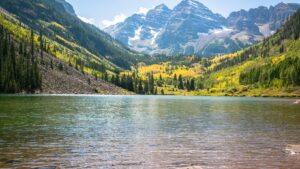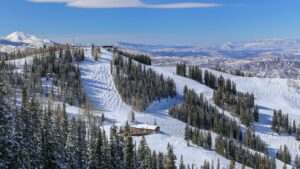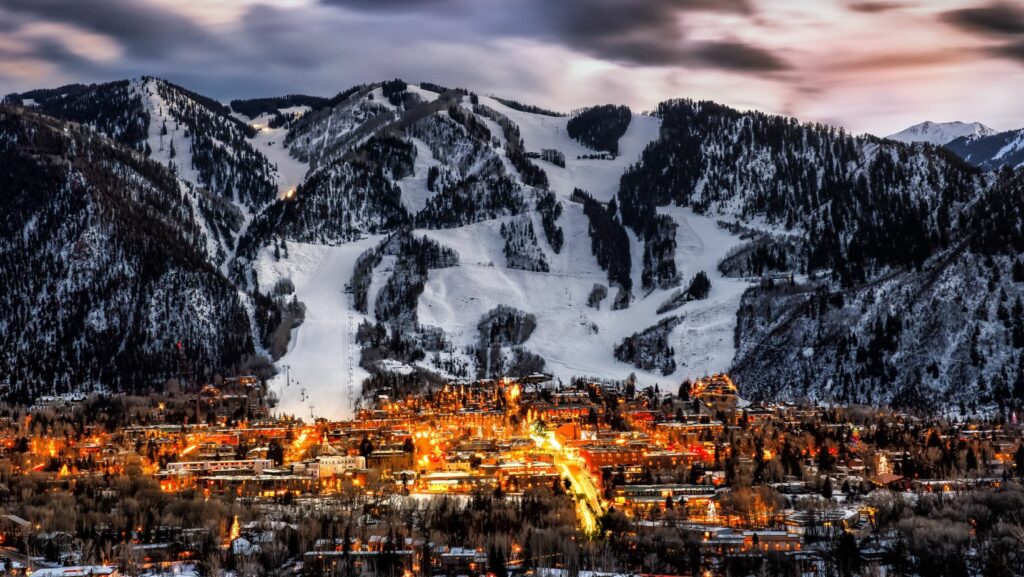Aspen photography captures the essence of nature’s unparalleled beauty, drawing both amateur and professional photographers to its scenic landscapes. Nestled in the heart of the Rocky Mountains, Aspen’s breathtaking vistas offer a unique blend of natural splendor and artistic inspiration. From the golden hues of autumn aspens to the pristine snow-covered peaks in winter, each season presents an ever-changing backdrop perfect for capturing stunning photographs.
Aspen Photography
Capturing the Essence of Seasonal Changes
Aspen photography stands apart by offering dynamic scenes as the seasons transition, turning from lush green summers to snowy white winters, fiery autumns, and vibrant springs. Photographers find Aspen’s seasonal changes not just appealing but evocative, providing an ever-changing backdrop for creative expression.
 During the summer, Aspen’s wildflowers and green vistas create bright, lively scenes. Photographers capitalize on the long days and golden hours to shoot landscapes bathed in soft, warm light. Contrastingly, winter blankets Aspen in snow, offering stark, high-contrast images that capture the serene beauty of the area. This season is perfect for photographers aiming to capture the quietude of snow-covered mountains and trees, often using the blue hour to add a cool tone to their images.
During the summer, Aspen’s wildflowers and green vistas create bright, lively scenes. Photographers capitalize on the long days and golden hours to shoot landscapes bathed in soft, warm light. Contrastingly, winter blankets Aspen in snow, offering stark, high-contrast images that capture the serene beauty of the area. This season is perfect for photographers aiming to capture the quietude of snow-covered mountains and trees, often using the blue hour to add a cool tone to their images.
Fall brings a fiery palette of oranges, reds, and yellows as the aspen trees change color. Photographers flock to Aspen during this time to capture the vibrant colors. They often use the natural contrast between the warm hues of the foliage and the cool blues of the sky or bodies of water to create visually striking images. Additionally, fall’s unpredictable weather can add drama to the landscape, providing photographers with the opportunity to capture unique moments.
Gear and Settings for Aspen Photography
Selecting the right gear and settings is crucial for capturing Aspen’s diverse landscapes through photography. Photographers benefit from a DSLR or mirrorless camera equipped with a versatile zoom lens, such as a 24-70mm, for wide landscapes and a 70-200mm for distant subjects. A sturdy tripod stabilizes shots during long exposures, essential for crisp images in low light conditions like dawn or dusk. Polarizing filters enhance the vibrant colors of fall and reduce glare in bright snow. For settings, a low ISO ensures minimal noise, while aperture priority mode allows control over depth of field, crucial for both detailed close-ups of Aspen’s natural textures and expansive scenic shots. Fast shutter speeds freeze motion in dynamic scenes, capturing Aspen’s wildlife or rustling leaves. Adjusting these tools and techniques to the season’s unique conditions maximizes the visual impact of Aspen photography.
Composition Techniques in Aspen Photography
 In Aspen photography, mastering composition techniques is essential for capturing the breathtaking landscapes that define the region. Photographers take advantage of Aspen’s diverse scenery by applying the rule of thirds, leading lines, framing, and the use of natural light to enhance the visual appeal of their images.
In Aspen photography, mastering composition techniques is essential for capturing the breathtaking landscapes that define the region. Photographers take advantage of Aspen’s diverse scenery by applying the rule of thirds, leading lines, framing, and the use of natural light to enhance the visual appeal of their images.
-
Rule of Thirds: This technique involves dividing the image into nine equal segments by two vertical and two horizontal lines. Placing points of interest along these lines or their intersections creates more tension, energy, and interest in the composition compared to simply centering the subject.
-
Leading Lines: Using natural or man-made lines to lead the viewer’s eye towards the main subject of the photograph is a powerful tool in Aspen photography. Roads, trails, and tree lines serve as effective leading lines that add depth and perspective.
-
Framing: Incorporating natural frames, like tree branches or rocks, adds depth to an image and focuses the viewer’s attention on the main subject. This technique is particularly effective in Aspen’s wooded areas and mountainous landscapes.
-
Utilization of Natural Light: The soft light of early morning or late afternoon is ideal for photography in Aspen. It highlights the vibrant colors of fall and the subtle hues of spring, summer, and winter, creating captivating scenes.
Best Locations for Aspen Photography
Building on the article’s focus on composition, natural light, and post-processing enhancements, identifying top locations becomes essential for maximizing the scenic potential of Aspen photography. Reflecting on these techniques, photographers find specific spots that truly encapsulate Aspen’s majestic landscapes. Such locations offer dynamic backgrounds that, when coupled with technical skills, result in stunning photographic artworks.


